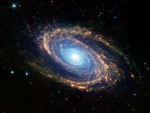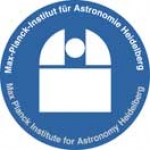Displaying items by tag: astronomy
Software: Astrophysics Source Code Library
The Astrophysics Source Code Library (ASCL) is a free on-line registry for source codes of interest to astronomers and astrophysicists, and lists codes which have been used in research that has appeared in, or been submitted to, peer-reviewed publications. ASCL entries are indexed by the SAO/NASA Astrophysics Data System (ADS).
It has been founded in 1999 by Robert Nemiroff and John Wallin, takes an active approach to sharing astrophysical source code. ASCL's editor seeks out both new and old peer-reviewed papers that describe methods or experiments that involve the development or use of source code, and adds entries for the found codes to the library. This approach ensures that source codes are added without requiring authors to actively submit them, resulting in a comprehensive listing that covers a significant number of the astrophysics source codes used in peer-reviewed studies.
[ Copernical note: this product has also a project page on Copenical : ASCL ]
ESO, European Southern Observatory
European Southern Observatory, is the foremost intergovernmental astronomy organisation in Europe and the world's most productive astronomical observatory. ESO provides state-of-the-art research facilities to astronomers and is supported by Austria, Belgium, the Czech Republic, Denmark, Finland, France, Germany, Ireland, Italy, the Netherlands, Poland, Portugal, Spain, Sweden, Switzerland and the United Kingdom, along with the host state of Chile. Several other countries have expressed an interest in membership.
ESO, formally the European Organisation for Astronomical Research in the Southern Hemisphere, is usually known as The European Southern Observatory.
ESO's main mission, laid down in the 1962 Convention, is to provide state-of-the-art research facilities to astronomers and astrophysicists, allowing them to conduct front-line science in the best conditions. The annual Member State contributions to ESO are approximately 198 million euros and ESO employs around 700 staff members. By building and operating a suite of the world's most powerful ground-based astronomical telescopes enabling important scientific discoveries, ESO offers numerous possibilities for technology spin-off and transfer, together with high technology contract opportunities and is a dramatic showcase for European industry.
The ESO Headquarters (comprising the scientific, technical and administrative centre of the organisation) are located in Garching near Munich, Germany. In Chile, ESO operates the Vitacura centre as well as three unique observing sites: La Silla, Paranal and Chajnantor.
ESO is building the 39-metre Extremely Large Telescope, the ELT, which will become “the world’s biggest eye on the sky”.
Astrophysics Data System (ADS)
The Astrophysics Data System (ADS), developed by NASA, is an online database of over eight million astronomy and physics papers from both peer reviewed and non-peer reviewed sources.
Abstracts are available free online for almost all articles, and full scanned articles are available in Graphics Interchange Format (GIF) and Portable Document Format (PDF) for older articles. New articles have links to electronic versions hosted at the journal's webpage, but these are typically available only by subscription (which most astronomy research facilities have). It is managed by the Harvard–Smithsonian Center for Astrophysics.
Astrophysics Source Code Library (ASCL)
The Astrophysics Source Code Library (ASCL) is a free on-line registry for source codes of interest to astronomers and astrophysicists, and lists codes which have been used in research that has appeared in, or been submitted to, peer-reviewed publications. ASCL entries are indexed by the SAO/NASA Astrophysics Data System (ADS).
Much of scientific progress now hinges on the reliability, falsifiability and reproducibility of computer source codes. Astrophysics in particular is a discipline that today leads other sciences in making useful scientific components freely available online, including data, abstracts, preprints, and fully published papers, yet even today many astrophysics source codes remain hidden from public view.
The Astrophysics Source Code Library (ASCL), founded in 1999 by Robert Nemiroff and John Wallin, takes an active approach to sharing astrophysical source code. ASCL's editors seek out both new and old peer-reviewed papers that describe methods or experiments that involve the development or use of source code, and add entries for the found codes to the library. This approach ensures that source codes are added without requiring authors to actively submit them, resulting in a comprehensive listing that covers a significant number of the astrophysics source codes used in peer-reviewed studies.
The ASCL established an advisory committee in 2011 to provide input and guide its development and expansion. ASCL source codes have been used to generate results published in or submitted to a refereed journal and are available for examination via a download site.
The ASCL is indexed by the SAO/NASA Astrophysics Data System (ADS) and Web of Science's Data Citation Index, and is citable by using the unique ascl number assigned to each code. The ascl number can be used to link to the code entry by prefacing the number with ascl.net (i.e., ascl.net/1201.001).
You can follow the ASCL on our blog, our low-volume Facebook page, on Twitter, or by becoming a member of the ASCL forum and subscribing to it.
SETI Institute
The mission of the SETI Institute is to explore, understand and explain the origin, nature and prevalence of life in the universe. The acronym SETI means Search for ExtraTerrestrial Intelligence.
The SETI Institute is a private, nonprofit organization dedicated to scientific research, education and public outreach.
The Institute comprises three centers, the Center for SETI Research, the Carl Sagan Center for the Study of Life in the Universe and the Center for Education and Public Outreach. It was founded in 1984.
Society for Popular Astronomy
The Society for Popular Astronomy is a national astronomical society based in the United Kingdom for beginners to amateur astronomy.
It was founded in 1953 as the Junior Astronomical Society.
The Astrophysical Journal
The Astrophysical Journal is a peer-reviewed scientific journal covering astronomy and astrophysics. It was founded in 1895 by the American astronomers George Ellery Hale and James Edward Keeler. It publishes three 500-page issues per month.
Max Planck Institute for Astronomy (MPIA)
The Max-Planck-Institut für Astronomie (Max Planck Institute for Astronomy) is a research institute of the Max Planck Society.
It is located in Heidelberg, Germany, adjacent to the historic Landessternwarte Heidelberg-Königstuhl astronomical observatory.
The institute was founded in 1967.
National Astronomical Observatory of Japan (NAOJ)
The National Astronomical Observatory of Japan (国立天文台 kokuritsu tenmondai) (NAOJ) is an astronomical research organisation comprising several facilities in Japan, as well as an observatory in Hawaii. It was established in 1988 as an amalgamation of three existing research organizations - the Tokyo Astronomical Observatory of the University of Tokyo, International Latitude Observatory of Mizusawa, and a part of Research Institute of Atmospherics of Nagoya University.
In 2004, after the Japan reform of national research organizations, NAOJ became a division of the National Institutes of Natural Sciences.
Aurora Max (project)
Aurora Max is a project who shows auroras of Yellowknife (Northwest Territories, Canada). This project allows to amateur astronomers to watch auroras until the solar maximum, in 2013. Aurora Max is available only in French and in English.

Amateur astronomers can see auroras online and live here, from the Observatory of Aurora Max.
This is in collaboration with the University of Calgary, the Canadian Space Agency, the society Astronomy North and the city of Yellowknife.










